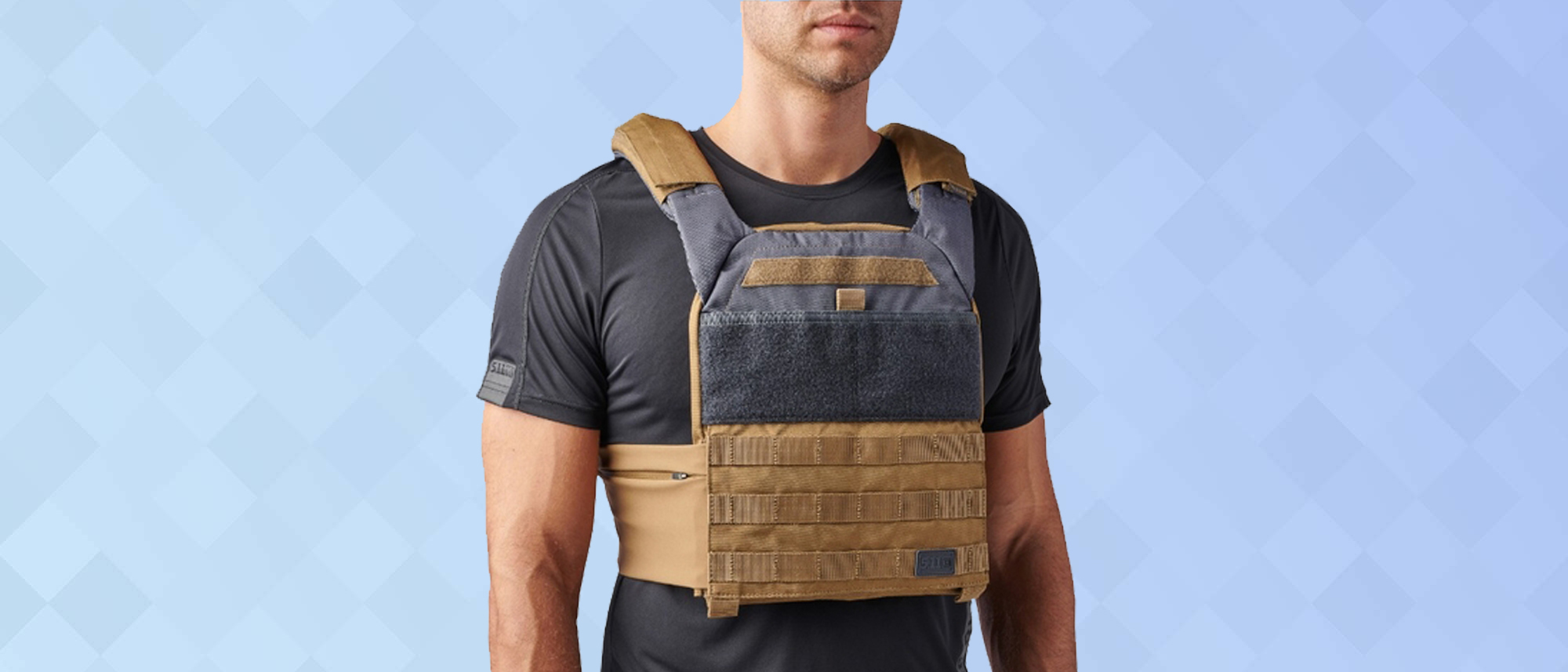Tom's Guide Verdict
The 5.11 Tactical TacTec Trainer is a weight vest that adapts a military design for the gym, and does it without losing functionality or quality construction – but it's a lot more affordable.
Pros
- +
Adjustable design that can fit any body
- +
Durable construction
- +
Great features for gym goers, like extra pockets and easy adjustments
- +
Affordable price
Cons
- -
Color options aren't all great
Why you can trust Tom's Guide
As part of my never-ending battle against the inevitable effects of a desk job, I started looking at several types of fitness gear, but I was most intrigued by weight vests, since they looked like a great option for enhancing the workouts I already do.
And after one week of testing, I was sold. Whether you're at home with YouTube workout videos, a CrossFit fan at your local box, or a focused athlete looking to improve your endurance and strength with some cross training, you can add a weight vest to your setup and immediately see benefits.
But there are several different weight vests on the market. One of the best brands isn't even a traditional fitness brand, but one that supplies police and security equipment — 5.11 Tactical. One look at these weight vests, and you'll see the connection. These weight vests look like body armor, because that's literally where they come from. The plate carrier design is the same one used to protect soldiers and police, but instead of bullet-resistant ballistic plates, these vests are loaded up with weight to provide more resistance during workouts.
5.11 Tactical sent us two different weight vests to test, the repurposed armor of the 5.11 TacTec Plate Carrier and the more fitness-oriented 5.11 TacTec Trainer weight vest, which we're reviewing here. Though the plate carrier is the more recognisable and popular of the two, the 5.11 TacTec Trainer may be the better weight vest, thanks to a design that ditches unneeded tactical features in favor of fitness-friendly elements, and a price tag that's a little easier to deal with.
5.11 TacTec Trainer weight vest: Price and availability
The TacTec Trainer sells for $130 through Amazon and 5.11 Tactical, and comes in a variety of colors.
- Black
- Kangaroo brown
- Python green
- Tungsten grey
While most of the colors are fine, I'm not a fan of the Tungsten grey, which looks like it uses a bit of grey and a bit of khaki. The result is a two-toned look that is kind of ugly. But maybe that's just me.
In addition to the vest itself, you'll need weight to load the vest with. There are several weight plate options that will work with the vest, including shaped weight plates from 5.11, Rogue Fitness, and other fitness brands.
But, in response to increasing steel prices, 5.11 has also introduced a rugged fabric sandbag that matches the shape and general dimensions of the weight plates, and works with the vest in an identical way. The 5.11 Weight Plate Sandbag sells for $50 for a pair, and is made of the same tough 600D polyester that's used in the company's weight vests.
All together,t he price for the fully loaded 5.11 Tactical TacTec Trainer weight vest is $180.
5.11 Tactical TacTec Trainer weight vest: Design
The design of the TacTec Trainer is rooted in the combat-tested designs of its progenitor, the 5.11 TacTec Plate Carrier. Both are based on plate carriers for ballistic armor, and there's an undeniable family resemblance between the two. If anything, the TacTec Trainer looks like the "Lite" version of the plate carrier.
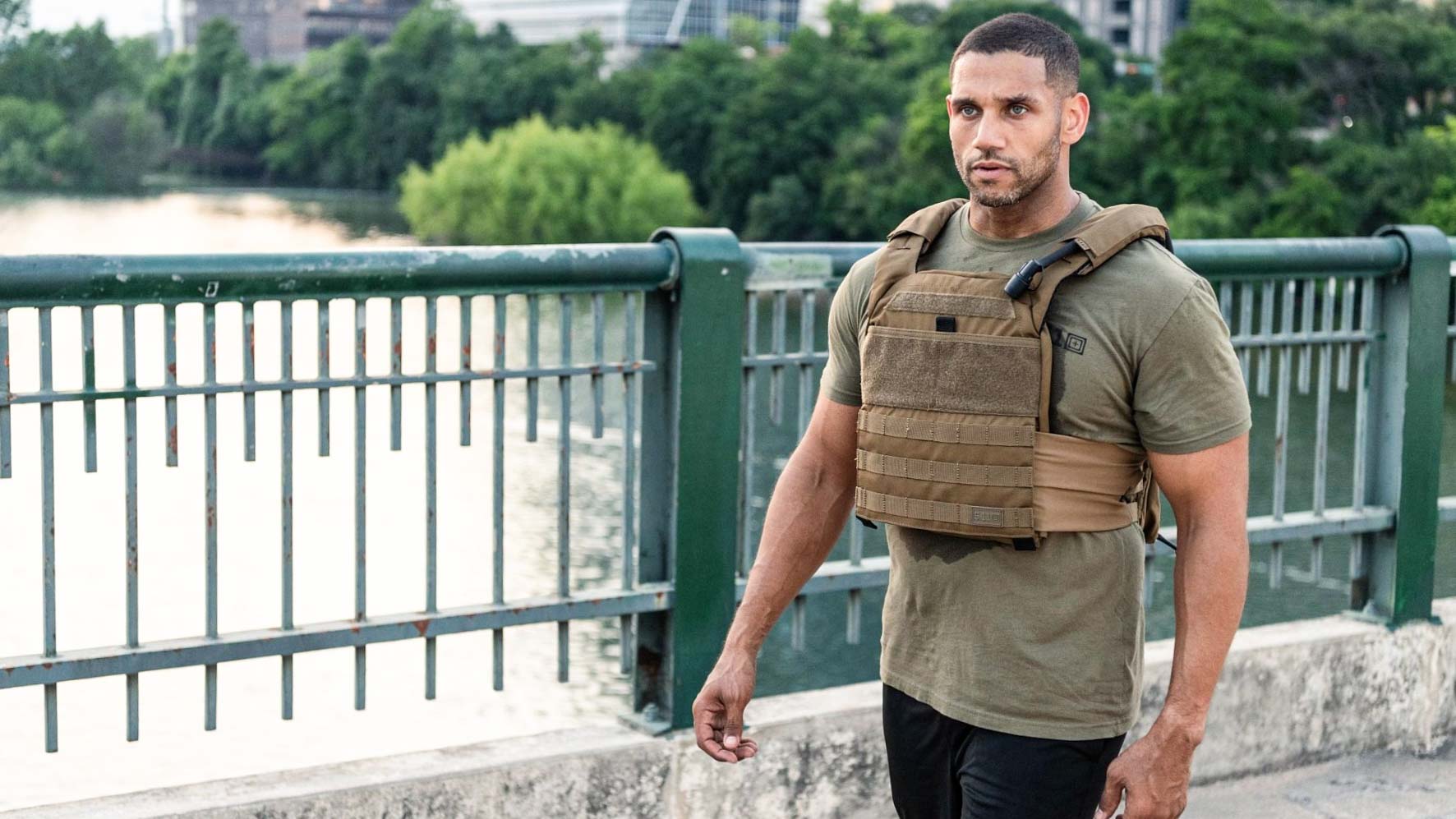
But unlike the plate carrier, which is repurposed tactical gear, the TacTec Trainer is fitness equipment first. Yes, it still has a very similar look and feel, but once it was strapped onto my torso, it was clear that the TacTec Trainer is more streamlined and user-friendly than the bulkier plate carrier.
The vest is made with rugged 600D polyester, with compartments in front and back for carrying weight plates or sandbags. The vest goes over the head, bib-style, with a padded yoke that keeps the straps and vest comfortable. The front and back panels are not only padded, but the padding uses a breathable mesh fabric to help you stay cool and dry during workouts that are neither.
But unlike its more rugged plate carrier sibling, the TacTec Trainer is definitely more civilian in its design. The elastic cumberbund that cinches the vest around you has been modified into a pair of pockets — one zippered, one open with an overlapping flap. They're perfect for, say, a set of keys in the zippered pocket, and a smartphone or MP3 player in the open pocket, with the open closure well-suited to wired headphones.
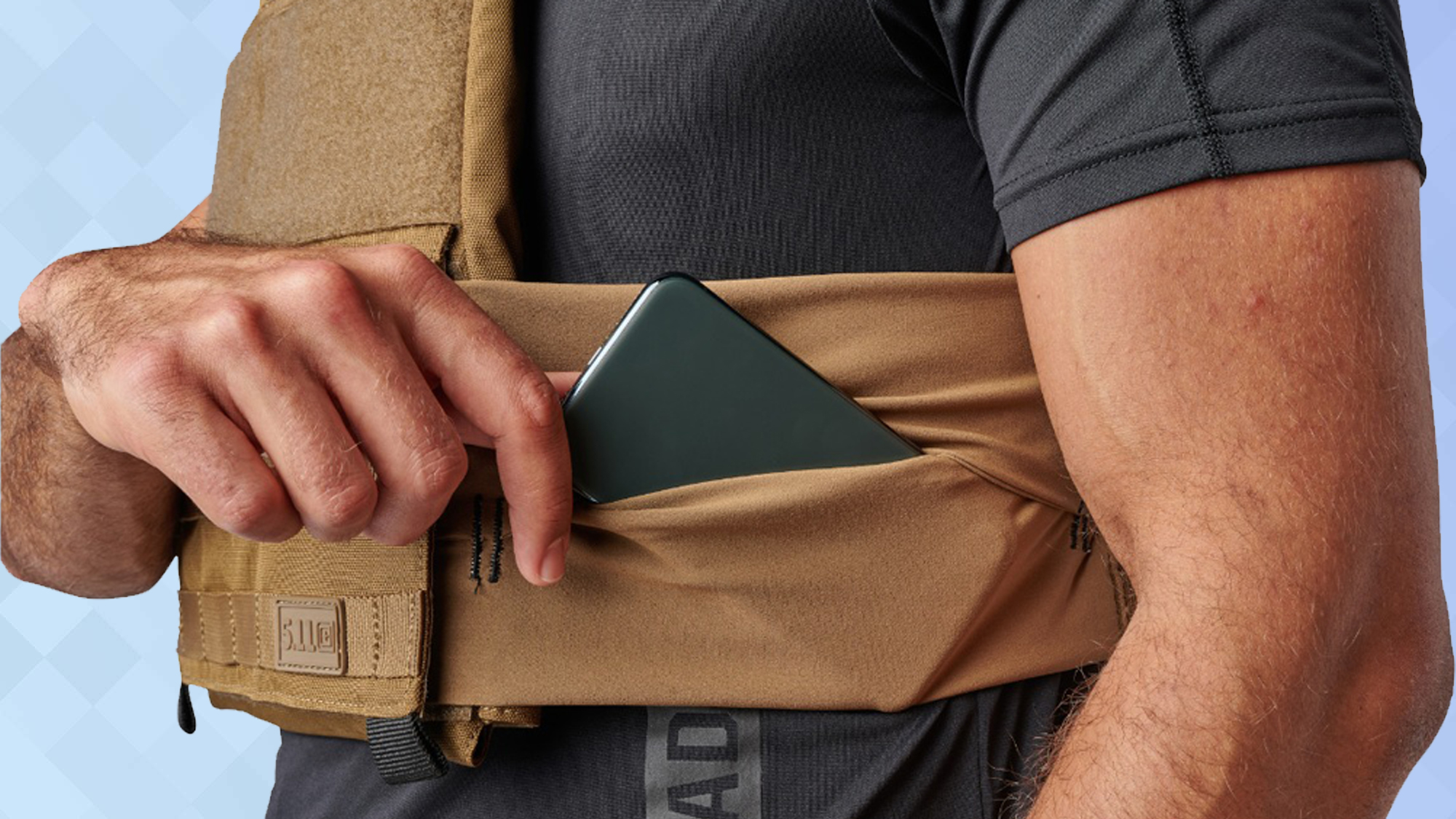
A front chest pocket is found on both vests, but the TacTec Trainer's chest pocket is a little more accessible. The vest still boasts a generous amount of MOLLE webbing on the front and back, as well as a Velcro loop panel on the upper half. But, unlike the plate carrier, the TacTec Trainer ditches the more tactical features, like a grab-and-drag handle on the back, and a quick release handle for emergency vest removal.
5.11 TacTec Trainer: Setup
Before you can start a workout with the weight vest, you'll need to load it.
The front and back of the vest are large compartments for inserting purpose-made weight plates or (in our case) an equivalent sandbag. The bottom edge of the front and back compartments are closed with basic hook-and-loop closures, with a pair of L-shaped straps inside that use the same hoo-and-loop to attach to the inside of the weight pocket. One end wraps around the sides of the plate to hold it horizontally, while the other end of the strap comes under the plate to hold it vertically.
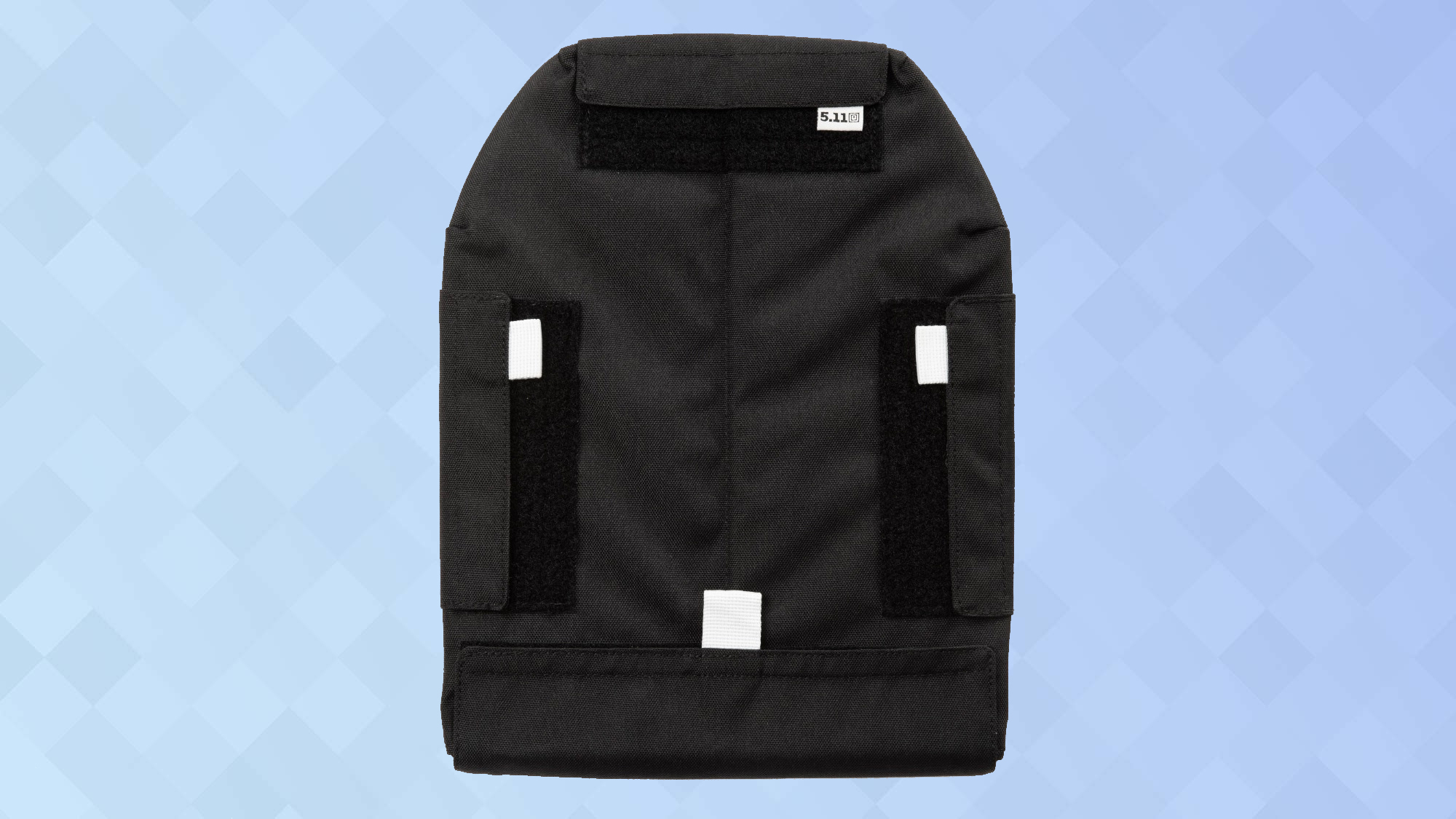
Once the straps are securely positioned, you simply close up the bottom of the chest or back compartment, and you're done.
Getting the plate or sandbag properly positioned and secured can take a few tries, especially with the Velcro-on-Velcro-on-Velcro that the sandbag introduces, so allot some time to getting everything assembled and secured before you start your first workout.
The good news is that you probably only need to load the vest once unless you want to change out the weight plates. Once the vest is loaded with weight, it can be stored as-is between workouts.
5.11 TacTec Trainer: Fit and adjustment
Putting on the vest is simple, with an over-the-head bib-style vest design that secures around the middle with an elastic cumberbund that secures in front. For many people, the only adjustment that will be needed is in how tightly you want to wrap the cumberbund around yourself, since it's very firmly secured with a hook-and-loop panel under another hook-and-loop belly flap.
If you need further adjustments, the shoulder straps can be easily lengthened or shortened, thanks to a two-piece design. The two-piece strap has a Velcro strap cover that has to be opened, and then the two layers of the strap are separated. Press them back together at the desired length and close up the cover. The result is a super-secure, well-padded strap that is much, much easier to adjust than the straps on the 5.11 Plate Carrier, which uses a more complex cable system to hold the vest together.
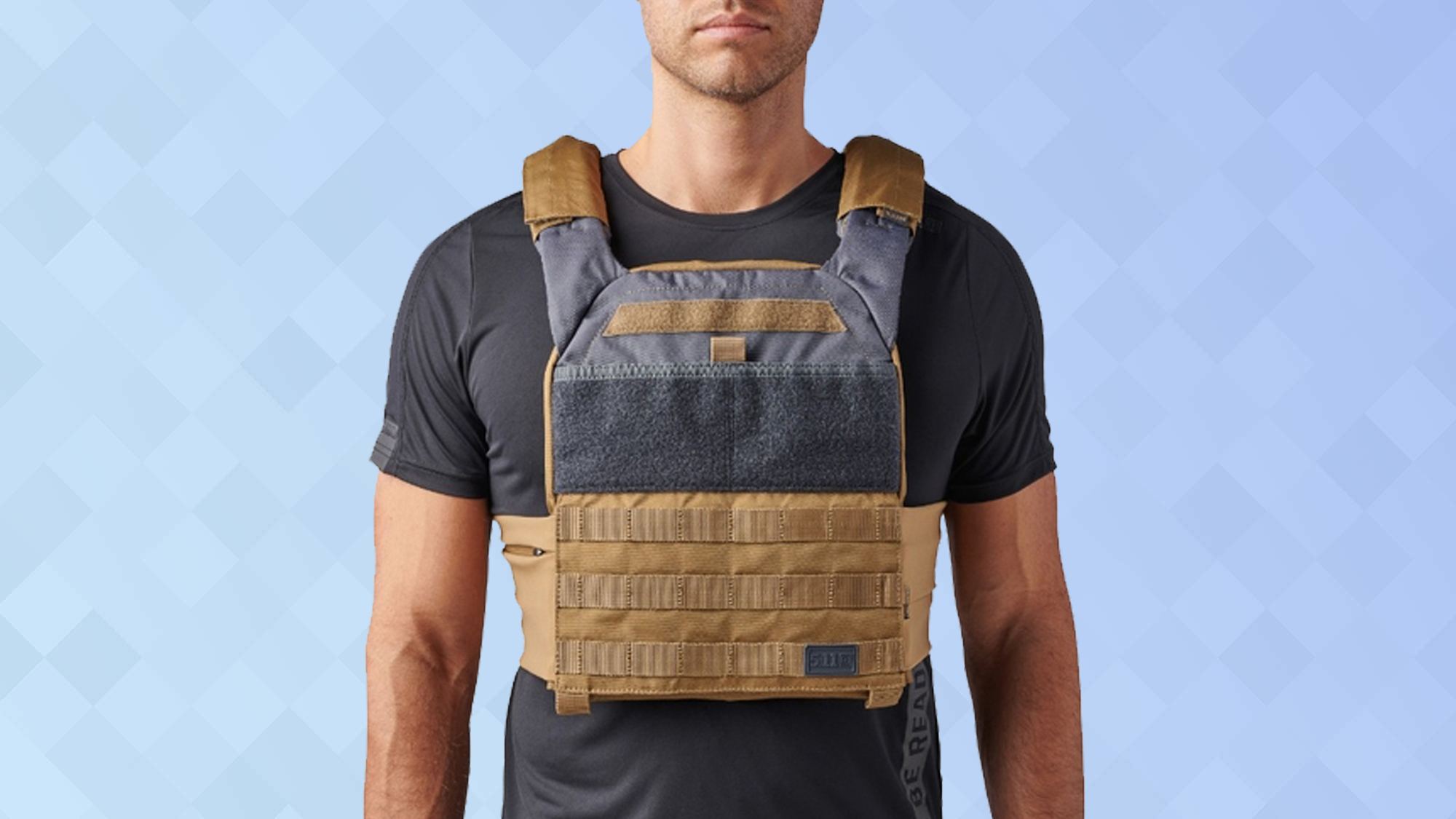
Similarly, the waist band cumberbund can be adjusted independent of the shoulder straps, but it's not as straightforward to adjust. Opening the back flap to shorten or lengthen the waist cumberbund straps, you'll find a tie-down system that involves threading a length of cordage through loops on the cumberbund straps. It's not hard to figure out, but it's not something you'll want to change frequently. However, even with that wrinkle, it's still easier to adjust than on the 5.11 Plate Carrier, which again uses a more complicated cable-based system to attach the two halves.
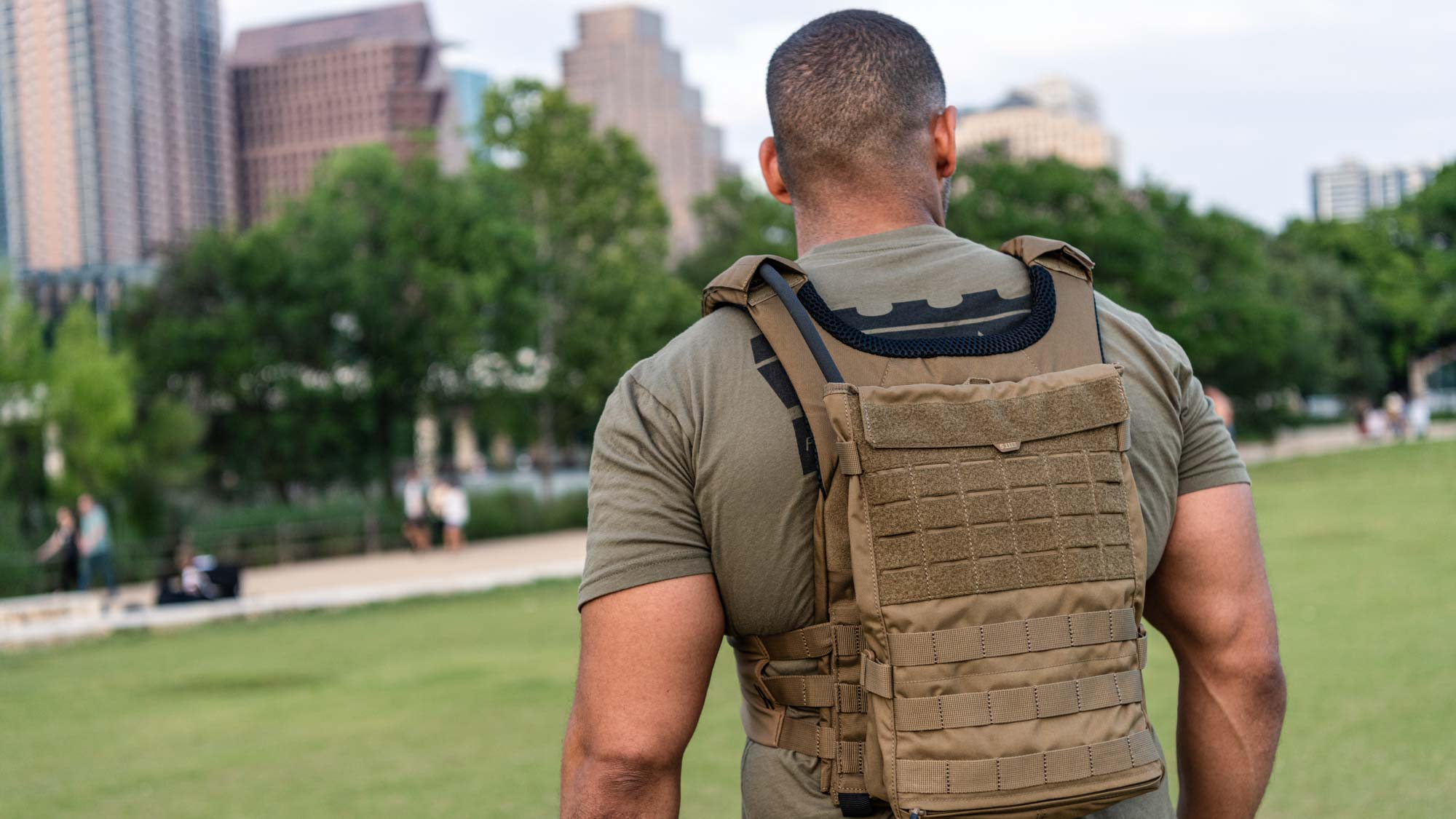
Once it's all adjusted to your body shape, however, the vest fits very comfortably. The padded straps and front and back compartments let the weight sit snugly against your torso without constricting your movement or breathing. The straps bear the weight comfortably, and the cumberbund pockets are easily accessible.
5.11 TacTec Trainer: Weight
For our review, 5.11 sent us the TacTec Weight Plate Sandbag, which is designed specifically for use with the vest. Filled with sand they let you load up the vest to 20 pounds of total weight, but they're easier to ship than a pair of traditional steel plates.
Selling for $50 for a set of two, they're also significantly cheaper than either the laser cut steel or cast metal used in other weight options. However, because they don't come with sand, the sandbag option is a little more labor intensive to set up.
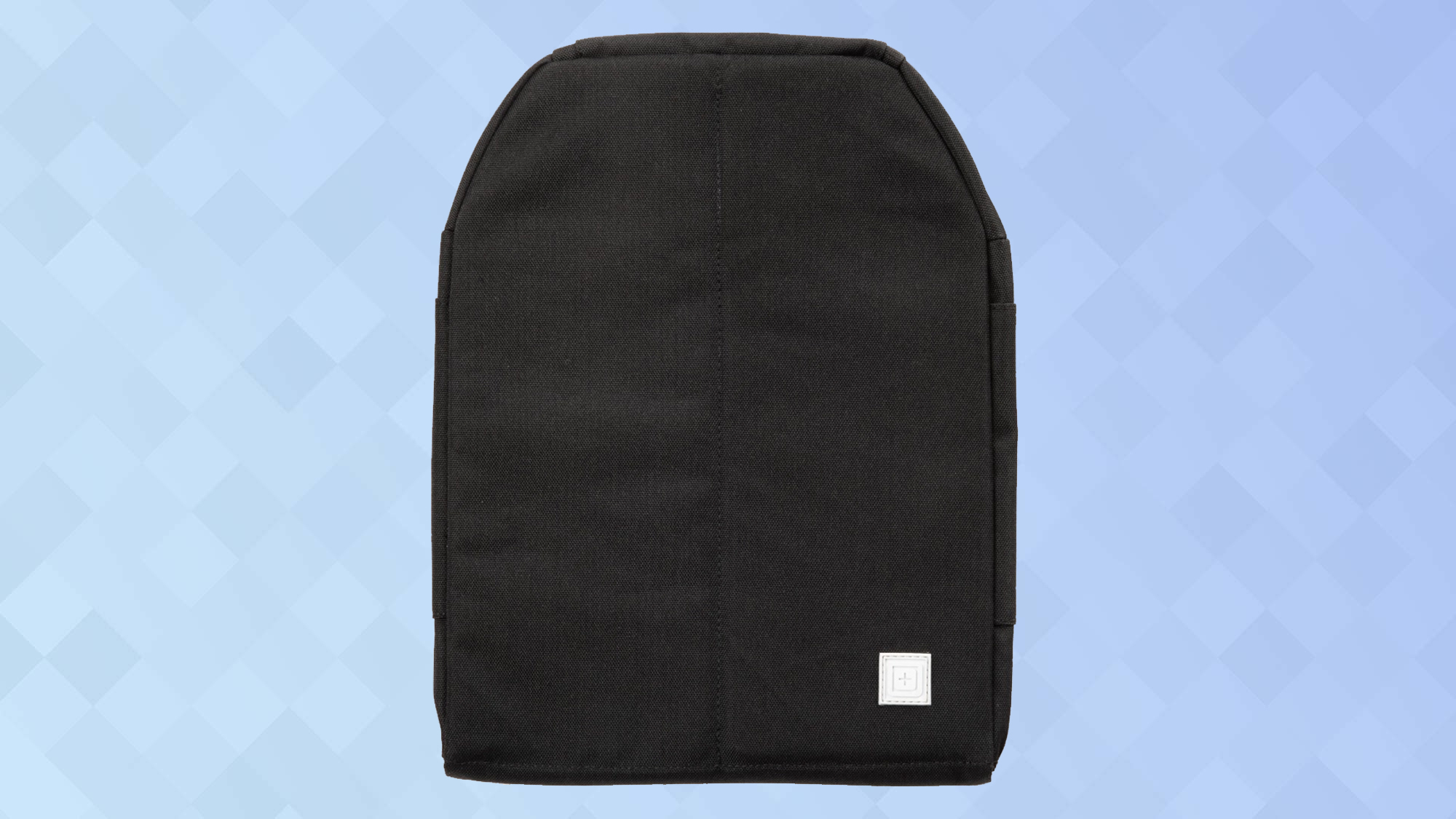
The sandbags are made of the same 600D polyester fabric that the vest is made of, with a heavy duty hook and loop closure on one edge and hook and loop straps that tighten down to remove any excess slack once the bag is filled to the desired weight.
The fabric is backed by rigid plastic boards to retain the correct shape. It not only prevents bulging, it also helps the bags maintain rigidity while loading the vest and working out. The bag itself has a bifurcated, two-compartment design, which helps spread the sand evenly across the vest, minimizing any shifting or bulging from settling sand after the bag is full.
A rolled hook and loop enclosure at the bottom of the sandbag does a surprisingly good job of preventing leaks — in my weeks using the sandbag with two different vests, I never noticed any stray sand in the vest, or when switching the weight from one vest to another.
The only issue that the sandbag presents is the need to buy some sand — a 50 pound bag of all purpose sand does the trick for about $5 — and the one-time hassle of filling. While a plastic cup and a bathroom scale are really all you need, you will want to take care to make sure that you fill the two compartments of the sandbag evenly. Also, just a tip from someone who's done it, you'll want to fill this outdoors, or put down some sort of a drop cloth, because there is no way to scoop 20 lb of sand without making a bit of a mess.
I filled the two bags to 8.75 pounds each, for a total of 17.5 pounds. Combined with the weight of the unladen vest, it totals out to 20 pounds of extra weight. This effectively filled the sandbags to maximum volume, so going heavier would require a different fill material, such as BBs.
The filled bag is then cinched tight with the three adjustment flaps. Once it's filled and adjusted the sandbag feels pretty solid, without any of the shifting and unstable load that you might think of with granular fillers like sand.
5.11 TacTec Trainer: Workout
Using the TacTec Trainer weight vest in a number of workouts, I was pleased to learn that it was not only comfortable, but very well suited to a range of movements and tempos.
The test the vest under real world conditions, I incorporated it into my own workouts for a couple of weeks, wearing it for long 30-minute walks in a hilly neighborhood, a basic calisthenics routine or pushups, squats and pullups, and a HIIT boxing routine with a heavy bag.
Whether I was hanging from a bar, hiking up a hill, or trying to stay light on my feet while I threw hooks and uppercuts, the vest stayed right where I wanted it to. It didn't ride up, it didn't sag when I got down into a pushup position, it didn't bounce when I quickened my pace.
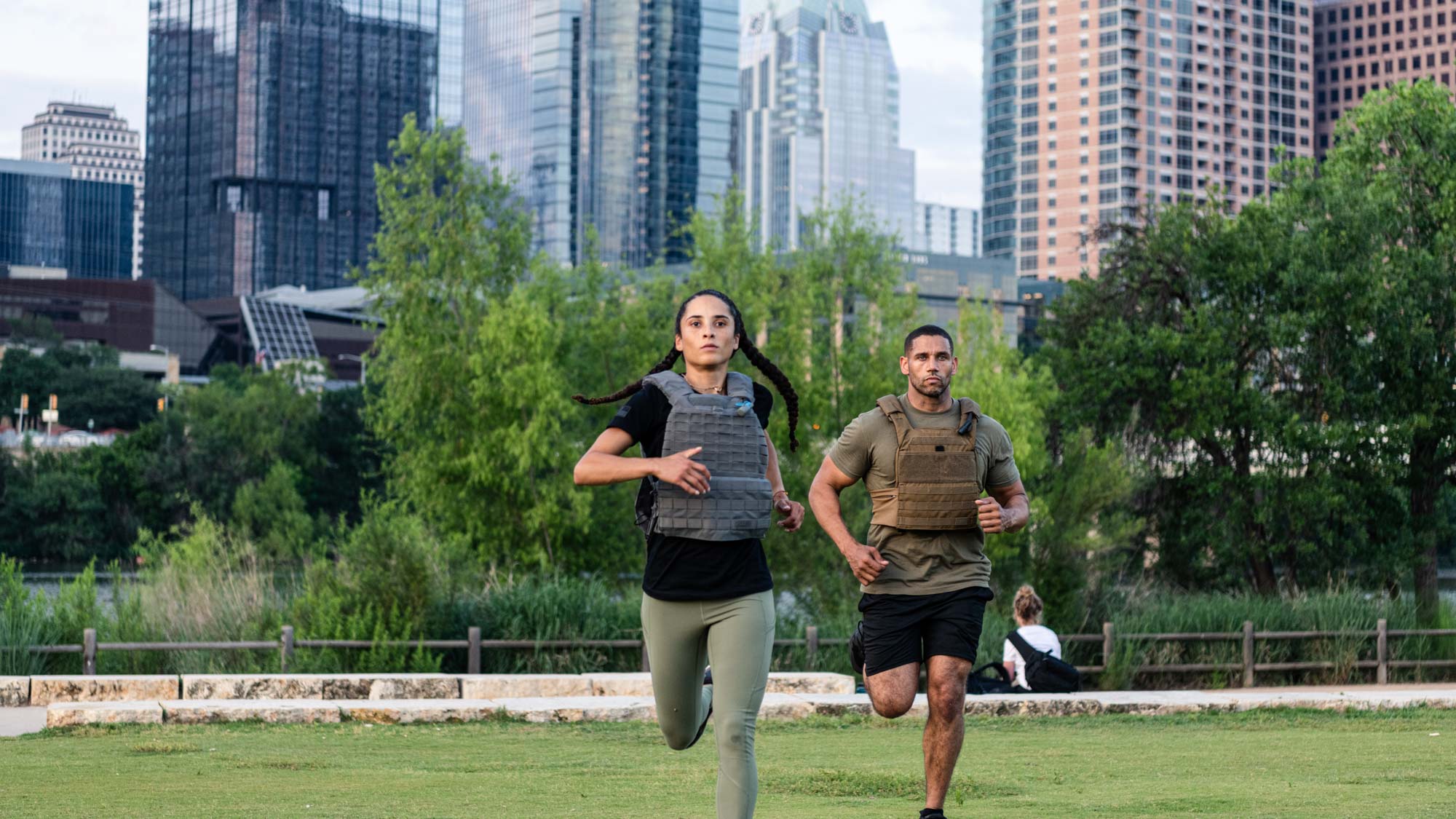
The vest is also notably less bulky than the 5.11 TacTec Plate Carrier, despite the obvious similarity of design. Between the change in side panel construction and removing tactical features like the grab handle or quick release strap, the whole thing felt sleeker and lighter, despite letting me carry the exact same 20 pounds of weight.
The only issue I had with the vest was one I also had with the plate carrier — the mesh fabric that covers the padded straps and interior of the vest is too rough to wear on bare skin. (Or, at least it was too rough for my delicate epidermis.) A T-shirt was enough to solve that problem, but users online report the mesh also being too rough for some technical fabrics, with ruined shirts as the result.
Through all of my workouts, the TacTec Trainer did everything the 5.11 Plate Carrier did — hold the weight securely to let me focus on my workout. Whether I was grinding out pushups or trying to stick and jab, the weight was a solid, stable presence on my chest and back, with no worrying about shifting loads.
5.11 TacTec Trainer: Verdict
In the end, it seems that the 5.11 TacTec Trainer does everything that the 5.11 TacTec Plate Carrier does, but does it a little better. The vest is easier to get on and off, more usable during workouts, thanks to the integrated pockets, and the redesign eliminates almost every irritation I had with the plate carrier.
By ditching the tactical elements and focusing on usability for regular folks trying to stay fit, they made the leading weight vest even better. And they did for a much more affordable price — the TacTec Trainer will save you a full $80 over its SWAT-team sibling. That's enough to make it my favorite of the two.
Brian Westover is currently Lead Analyst, PCs and Hardware at PCMag. Until recently, however, he was Senior Editor at Tom's Guide, where he led the site's TV coverage for several years, reviewing scores of sets and writing about everything from 8K to HDR to HDMI 2.1. He also put his computing knowledge to good use by reviewing many PCs and Mac devices, and also led our router and home networking coverage. Prior to joining Tom's Guide, he wrote for TopTenReviews and PCMag.
